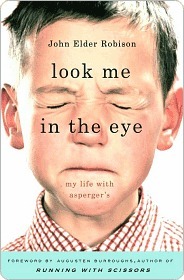More on this book
Community
Kindle Notes & Highlights
Read between
April 6 - April 18, 2020
Asperger’s is not a disease. It’s a way of being. There is no cure, nor is there a need for one. There is, however, a need for knowledge and adaptation on the part of Aspergian kids and their families and friends.
Successful conversations require a give and take between both people. Being Aspergian, I missed that. Totally.
me and his face was all scratchy. “I’ll be okay. I’ll be home soon,”
They learn it from seeing how other kids react to their words, something my brain is not wired to do. I have since learned that kids with Asperger’s don’t pick up on common social cues. They don’t recognize a lot of body language or facial expressions. I know I didn’t.
Caring—or pretending to care—about other people is a learned behavior.
What can I do to fix things?
I have what you might call “logical empathy” for people I don’t know. That is, I can understand that it’s a shame that those people died in the plane crash. And I understand they have families, and they are sad. But I don’t have any physical reaction to the news.
As I got older, I found myself in trouble more and more for saying things that were true, but that people didn’t want to hear. I did not understand tact. I developed some ability to avoid saying what I was thinking. But I still thought it. It’s just that I didn’t let on quite so often.
things together. I began by building simple
However, that never occurred to me at the time. It’s clear to me that regular people have conversational capabilities far beyond mine, and their responses often have nothing at all to do with logic. I suspect normal people are hardwired to develop the ability to read social cues in a way that I am not.
have learned a range of questions that are socially acceptable. But my inventory of questions is limited, and it seems other people are a lot more flexible.
With me, though, there is no external sign that I am conversationally handicapped. So folks hear some conversational misstep and say, “What an arrogant jerk!” I look forward to the day when my handicap will afford me the same respect accorded to a guy in a wheelchair. And if the respect comes with a preferred parking space, I won’t turn it down.
Daniel Tammet’s book, Born on a Blue Day,
Starting at about six years of age, I learned not to submit myself to repeated humiliation from people or institutions.
Because Aspergians are driven to learn all they can about subjects that interest them,
All the bad things that have happened to me in my life have simply increased my resolve to overcome the obstacles that are thrown in my path. And I’ve done that with reasonable success so far. But those voices were still there. And as I got older, they began to emanate from other people, too. The message was the same. “You’re so anxious and worried! You should try antidepressants!”
just worked harder. I always figured I’d be better off solving a problem as opposed to taking medication to forget I had a problem.
and I did. One of the first books I read was Daniel Tammet’s Born on a Blue Day, which went on sale in America two weeks before I brought Look Me in the Eye to Crown.
our brains continue to develop throughout our lives.
They’d been studying autism and the workings of the brain, and they gave me some startling insights.


